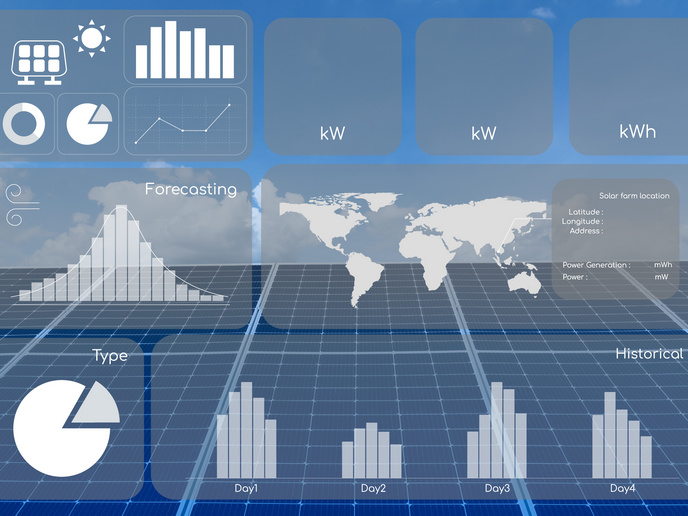New tools boost short-term forecasting accuracy of renewable energy sources
As renewable energy sources (RES) become a larger part of the electricity generation mix in many European countries, their inherent intermittent nature presents operational challenges. The key to secure and economical operation of power systems heavily dependent on RES is to improve short-term forecasting of RES generation. The EU-funded Smart4RES(opens in new window) sought to tackle these challenges with a holistic approach. “Our approach encompasses the entire model and value chain related to RES forecasting, from weather forecasting to end-use applications,” notes project coordinator George Kariniotakis. “We sought to achieve groundbreaking improvements in RES forecasting technology rather than just incremental advancements.”
Improvements across broad time and spatial scales
Smart4RES ultimate goal was to develop and validate next-generation tools to improve RES forecasting performance by at least 15 %. Project partners worked on improving numerical weather prediction models for the RES industry, integrating data from satellites and sky images. “We have developed an ultra-high resolution large eddy simulation approach for very local weather forecasting. To improve prediction of weather variables, we used for the first time a network of sky cameras spread over a large area, which is a step up from the traditional method of using just one camera at a site,” explains Kariniotakis. “The use of sky camera images for solar power prediction has yielded a 20 % performance boost, specifically for predictions 15 to 30 minutes ahead.” “We also developed a seamless forecasting model that simplifies traditional model chains, providing a single, continuous model for probabilistic forecasting of solar and wind production from minutes to days ahead. This method dramatically reduces the computational load by 99 % while delivering comparable results to existing models,” adds Kariniotakis. Furthermore, to improve short-term accuracy, researchers created methods to share data between different renewable energy plants, while keeping the information private and secure. This helped improve the probabilistic score by up to 20 % for one up to 6 hours ahead.
Increasing forecast value and aiding decision-making
The project team have built a cutting-edge data market prototype for sharing data from distributed energy sources armed with new algorithms and business models. “This system goes beyond just being accurate – it squeezes the most value out of data, supporting better renewable energy forecasts,” states Kariniotakis. “Decision-making for RES integration in power systems and markets is now more efficient, with predictive dispatch for standalone power systems, multi-service storage options, data-driven renewable energy trading and local control algorithms that handle grid congestions. We managed, for example, to reduce by 30 % the flexibility activation costs for the electricity grid operators.” “To make things simpler than the traditional forecast-then-optimise model, we have proposed a prescriptive analytics approach, based on interpretable AI, that permits to streamline learning from available data to decision-making,” adds Kariniotakis.
Testing models in real conditions
Project partners have integrated the newly developed weather forecasting methods into the operational models of Meteo-France and Whiffle. These improved models were benchmarked against commercial forecasts and used to assess key performance indicators for RES trading in electricity markets. They have also tested frequency control strategies for standalone islands using real-time simulations that mirrored high RES usage. Ultimately, a cost-benefit analysis of RES forecasting and decision-support tools was conducted. The aim was to identify the most effective combinations of data sources and understand the potential advantages of advanced decision-support. For instance, one such benefit could be the possibility to delay grid upgrades by intelligently managing local flexibility. “We have laid the groundwork for advanced forecasting tools for weather-dependent RES production. These next-generation tools aim to mitigate the effects of RES intermittency in power systems with high renewable shares, covering a wide range of timeframes – from minutes to over 10 days – and spatial scales – from individual RES plants to regional or national levels,” concludes Kariniotakis.







